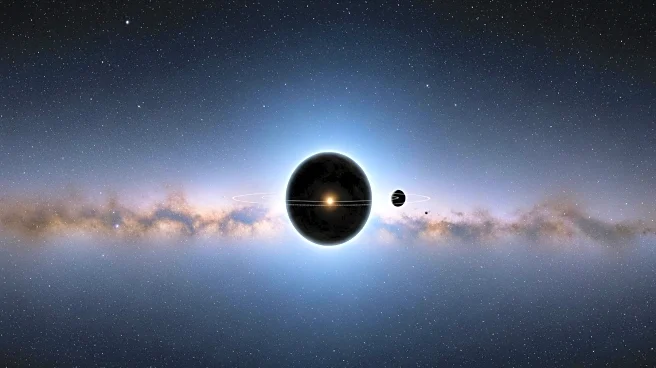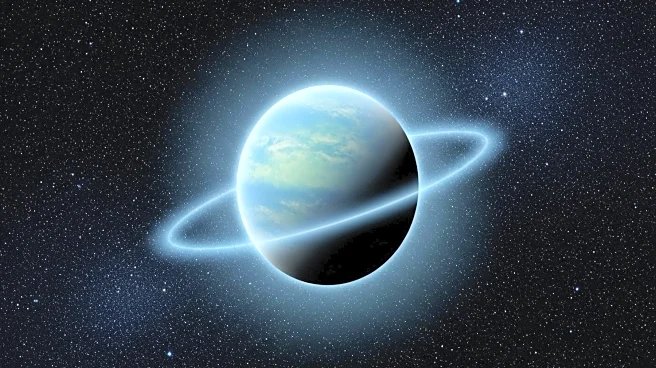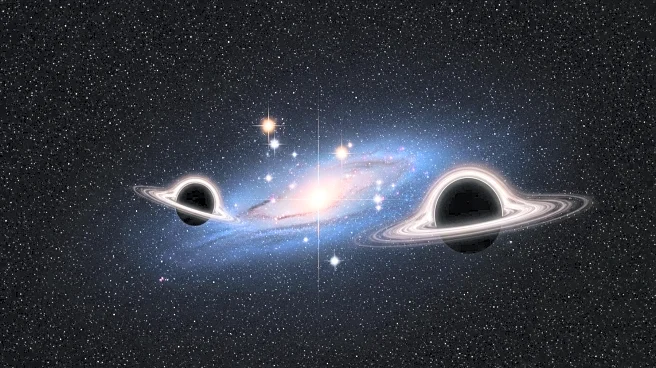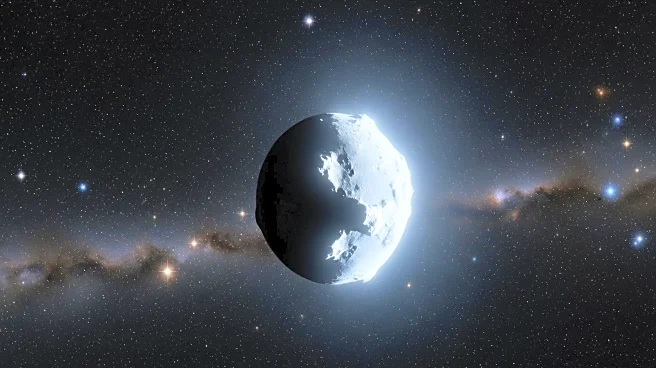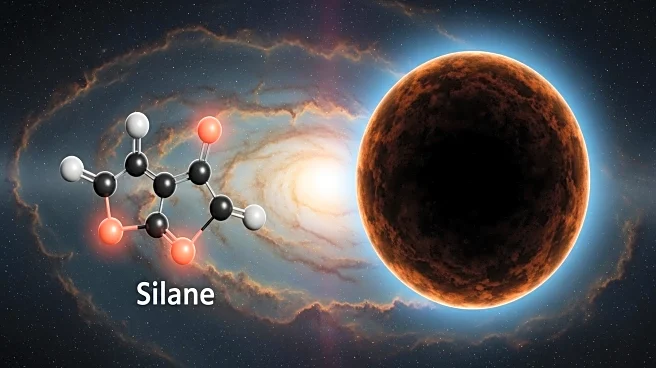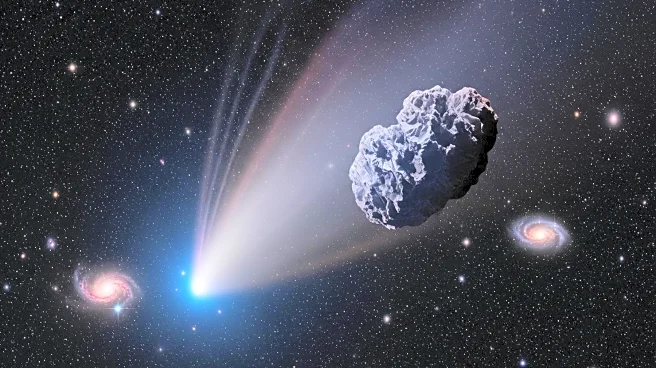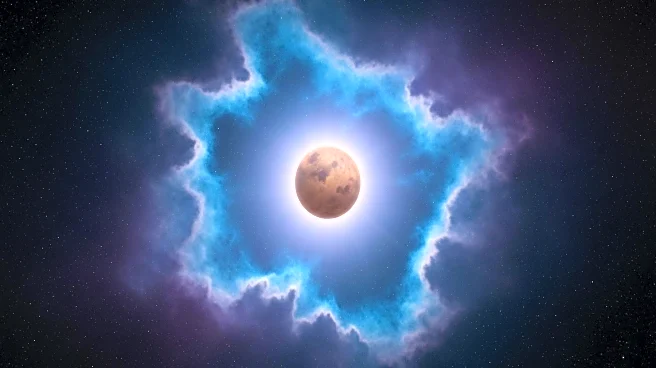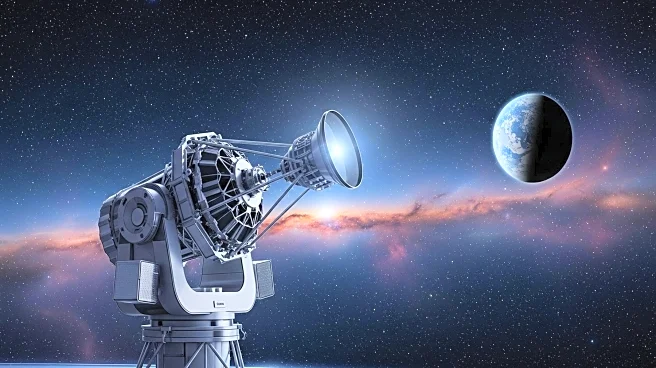What is the story about?
What's Happening?
Astronomers have observed a potential new moon orbiting the dwarf planet Quaoar, located beyond Pluto in the solar system. The discovery was made during a stellar occultation event, where Quaoar passed in front of a background star, briefly blocking its light. The observation was conducted by Rick Nolthenius and Kirk Bender in California, who detected a 1.23-second blip indicating the presence of a new satellite. The findings suggest the moon is at least 19 miles wide and may be in a resonant orbit with Quaoar's outermost ring. The results were published in the Research Notes of the American Astronomical Society.
Why It's Important?
The discovery of a new moon around Quaoar could provide significant insights into the dynamics of dwarf planets and their satellite systems. Understanding the formation and behavior of moons and rings in the outer solar system is crucial for planetary science. This finding challenges existing theories about the survival and stability of planetary rings, prompting further research into the gravitational interactions between Quaoar and its satellites. The potential new moon adds to the complexity of Quaoar's system, offering opportunities for future observations and studies.
What's Next?
Further observations are needed to confirm the existence of the new moon and determine its precise orbit. Astronomers will continue to monitor Quaoar's occultations to gather more data. The discovery may lead to additional studies using advanced telescopes like the James Webb Space Telescope. If confirmed, the new moon will require naming, following the International Astronomical Union's conventions. The ongoing research will contribute to a deeper understanding of the outer solar system's dynamics.
AI Generated Content
Do you find this article useful?
